#gusvansant
Explore tagged Tumblr posts
Text
Cine: Eric







Johnny (Jesse Bradford) tiene un objetivo claro a pesar de atravesar una etapa confusa de su vida: quiere ser un piloto de carreras. Su destino es Charlotte, Carolina del Norte, pero su presente lo encuentra buscando fondos mientras deambula por las iluminadas calles de Las Vegas.
Allí conoce un mundo de decadencia y vicios, pero también a su mejor amigo, Eric (Jordan Brower), un muchacho que vive con una amiga de su madre (Daryl Hannah) tras el deceso de ésta. Eric, como sus compañeros de tropelías (entre los que se destaca Steve, interpretado por Jonathan Taylor Thomas), se dedica al robo y a la prostitución masculina (en su caso, sus clientes son varones). Sin embargo, a diferencia de estos, Eric es un joven gay que está profundamente enamorado de Johnny, a pesar de saber que tal clase de afecto jamás será correspondido. Ese es su mayor dolor: el de dar por sentado que su amigo jamás se interesará por él de esa forma.
También conocido como "Adicto a la velocidad", "Speedway Junky" (1999) es producido por Gus Van Sant, quien ya tocó una temática similar en "Mi mundo privado" ("My Own Private Idaho", 1991), reseñado en este blog. Marcó el debut en el largometraje del director y también guionista Nickolas Perry, quien aquí ha dado roles de importancia a actores destacados como Tiffany-Amber Thiesen, Patsy Kensit o Milo Ventimiglia.
youtube
#cine#Eric#gay#adolescencia#JesseBradford#JordanBrower#DarylHannah#JonathanTaylorThomas#AdictoALaVelocidad#SpeedwayJunky#1999#GusVanSant#NickolasPerry#Tiffany-AmberThiesen#PatsyKensit#MiloVentimiglia
4 notes
·
View notes
Text
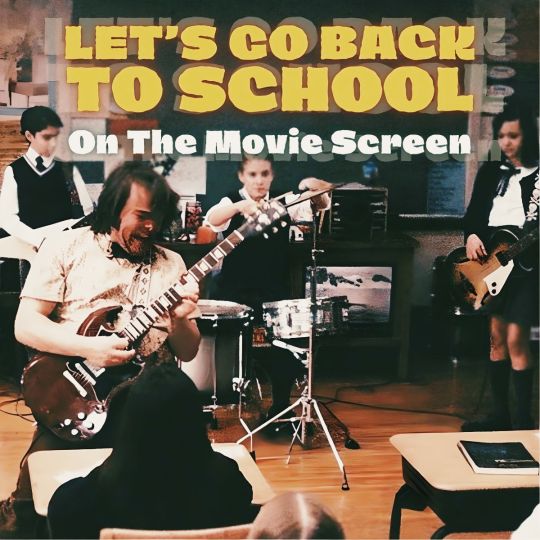
#JohnLandis#ChristopherCain#GusVanSant#RichardLinklater#TetsuyaNakashima#JohnBelushi#DonaldSutherland#KevinBacon#JamesBelushi#LouisGossettJr#RobBrown#SeanConnery#JackBlack#TakakoMatsu
0 notes
Photo

#Elephant #エレファント #GusVanSant #ガスヴァンサント #シネマおっさん #おっさんシネマ たぶん その2️⃣7️⃣4️⃣ 🏫👍 #エレファントカシマシ娘 https://www.instagram.com/p/CoY2k97r5wI/?igshid=NGJjMDIxMWI=
1 note
·
View note
Text
#BillSkarsgard y #DacreMontgomery protagonizarán #DeadMansWire de #GusVanSant √
Bill Skarsgård (Nosferatu) y Dacre Montgomery (Stranger Things) protagonizarán Dead Man’s Wire, un thriller de rehenes que marcará la próxima película del nominado al Oscar Gus Van Sant. Gus Van Sant / Imagen cortesía Stewart Cook/REX/Shutterstock Basada en una historia real, la película sigue a un ex promotor inmobiliario que toma como rehén al banquero hipotecario que le hizo daño y le exige…
0 notes
Text
MOVIE QUOTE OF THE DAY:
“I'm a connoisseur of roads. I've been tasting roads my whole life. This road will never end. It probably goes all around the world.”
River Phoenix in My Own Private Idaho
#MyOwnPrivateIdaho #GusVanSant #RiverPhoenix
#moviequotes
#MovieQuoteOfTheDay

0 notes
Photo

#stephenbaldwin #gusvansant https://www.instagram.com/p/CeTJ6ZcKPUF/?igshid=NGJjMDIxMWI=
25 notes
·
View notes
Text
Ranking : Gus Van Sant (1952-present)
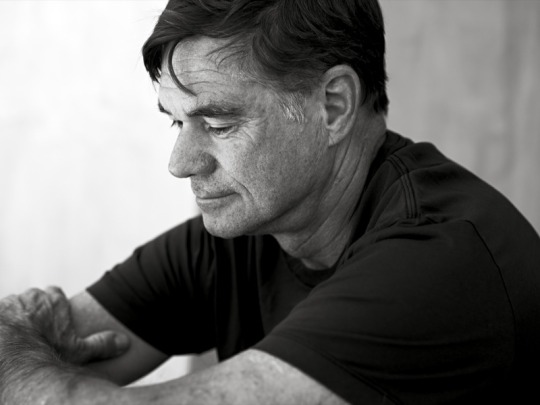
I was somewhat familiar with Gus Van Sant prior into taking the deep dive through his catalog, but he was certainly a man that I thought I had a handle on. I knew he had more than a few amazing films under his belt, but the recent years had not been kind to him (see the shot taken at him in Jay and Silent Bob Strike Back). I knew that he was from the Pacific Northwest (Oregon specifically), and his coming of age in an area that embraces weirdos and outsiders had an impact on him as a human and as a creator. I knew that films like Milk and Good Will Hunting had taken Van Sant to the highest heights, while the collective panning of films like Psycho and Last Days served as valleys in a career full of glorious peaks.
What I came to discover, however, was a man with genuine creative integrity, and lots of it. I found a director who understood his characters and actors on a human level, and shared them with viewers in ways that helped rich connections develop. I saw a director who was not afraid to make those that society often considers outcasts the emotionally rich and important centers of his narratives. I watched Gus Van Sant present, explore, develop and refine his style over deeply independent and infamously studio-driven projects, giving all experiences as much care and attention as he was able. I saw films I was familiar with find placement behind films I was new to, I discovered that his recent creative years have not been as kind to him as the first two-thirds of his career, and I can see that there still may be a bit of a smolder left in his creative fire.
Ranking directors is a labor of love, but by no means do I consider myself the definitive professional on film canon. I enjoyed all of the Gus Van Sant films I watched on some level, and as always, for those brave enough to interact, I’d be curious to see where you would make adjustments to the list. But enough introduction talk, let’s get into what you folks came for!

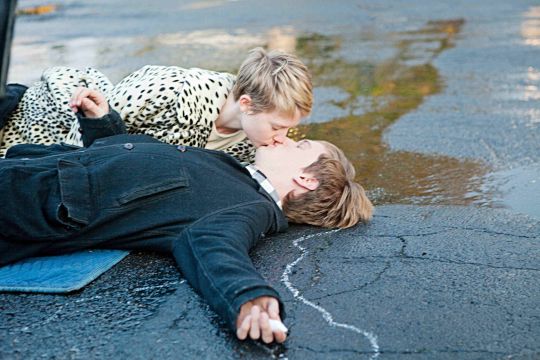
17. Restless (2011) There are things about Restless that I want to love without judgement. First and foremost, Mia Wasikowska is an absolute treasure who shines in this performance from the earlier portion of her career. The portrayal of Hiroshi is one of the more subtle, substanced and interesting ways of using a ghost within the film framework. As minor a thing as it may be to the casual moviegoer, some of this film’s technical aspects are astounding, specifically the costuming and the lighting choices. Where the film distracts me, and therefore drops in these rankings, is where it takes the YA approach to the romantic drama, with a healthy dose of manic pixie dream girl energy thrown in for good measure. When it comes to displaying romance on-screen, be it teenage or otherwise, there are no expectations, even for a director with a distinct style. Where my issues arise are in the way that death is handled in this film… while I do understand that not every film has to be a distinct statement for a director (especially a film written by another individual), Gus Van Sant had already established a very mature approach to the subject of death, and the way that death and the manic pixie dream girl aspects are intertwined feels more on the amateur side than I am comfortable with for a Gus Van Sant film. Maybe giving the impossibly troubled young man a muse with an expiration date as his way to find the best version of himself is a stroke of genius that provides a gateway for deep commentary on the concept of the manic pixie dream girl, but the film is so approachable and not the type to bare teeth (be it satirically or otherwise) that I doubt there is any subtext to its intention. For that reason, this film finds itself on the bottom half of the Van Sant canon.

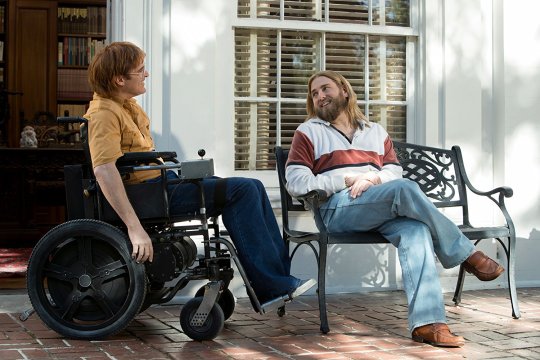
16. Don't Worry, He Won't Get Far on Foot (2018) After the critical and box office disappointment that was The Sea of Trees, director Gus Van Sant had quite the hill to climb with his next film, and with his adaptation of Don’t Worry, He Won’t Get Far on Foot, it seemed he was able to right those respective ships. Strangely, the film failed to connect with me, and as far as I can tell, it seems to be the victim of an “all sizzle, no steak” scenario. The film is certainly a showcase of a very diverse cast, and based on both the flashback-based and group therapy approach to the story, there are a wealth of opportunities to create memorable moments. Unfortunately, and perhaps due to an oversight on my end, I failed to find enough substance during my viewing of the film to prop up the parade of moments. What it felt like I was left with, sadly, was a Simple Jack-level approach to conveying a paraplegic-centered story, which undercut the fact that the film is actually telling the true story of cartoonist, artist and musician John Callahan. That’s not to say that the film doesn’t have it’s positive aspects, such as the John Callahan illustrations and the animated versions of his work, but those positive aspects feel sparse in comparison to how much the film relishes in what feels like Oscar bait. If nothing else, see this film for Jonah Hill, because it took me much longer than it should have to recognize him, partly due to his impressive weight loss and partly due to how dedicated he is to achieving the film’s period look.


15. The Sea of Trees (2015) Death is no stranger in the films of Gus Van Sant, but I don’t feel that it would be bold to state The Sea of Trees deals with death in the most direct manner. For those that subscribe to grief having stages, this film accounts for all of them in some way, shape or form during the course of the narrative as we watch Arthur Brennan fall apart and rediscover himself in the wake of losing Joan Brennan, his wife. Placing the film in Aokigahara (aka the "Japanese suicide forest") not only gives the film a sense of natural beauty, but a foreboding sense of dread and despair as well. The core cast is as strong as any found in a Van Sant film, with Matthew McConaughey, Ken Watanabe and Naomi Watts all turning in solid performances. Sadly, the film falters in one very core aspect : sympathy for the protagonist. I found myself feeling very bad for Joan Brennan as I watched her arc, and despite knowing nothing about Watanabe’s character portrayal of Takumi Nakamura, I found myself sympathetic to him based solely on what he was emoting. Arthur Brennan, however, is interesting in all the wrong ways… he is extremely cold and purposefully flat when introduced, the moments we share with the Brennans only seem to show Arthur finding joy at the expense of Joan’s pride, his view of the loss of his wife (and his world view in general) seem to be extremely self-centered, and when he does show heroic attributes they are rooted solely in self-preservation. Perhaps if Van Sant had not already made such eloquent reflections on death via The Death Trilogy and Paranoid Park, The Sea of Trees could have been seen in a different light, but when you set such a high bar for your work, returning to stereotypical storytelling can feel flat and uninspired.

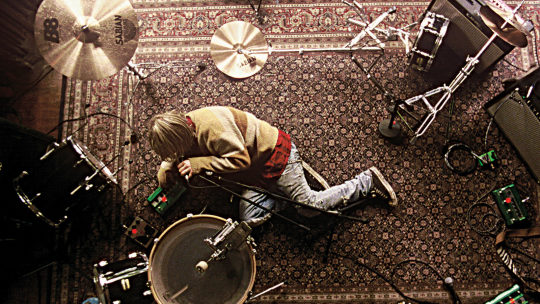
14. Last Days (2005) Last Days is a film with a weird energy and aura surrounding it… in some ways, it feels like the most performative film not only of the Death Trilogy, but out of the entire Gus Van Sant catalog. At the risk of using too negative an adjective, it also feels the most exploitive, though neither of these observations are necessarily meant to be a knock against the film. The Death Trilogy could not help but be exploitive at its root, as each film was inspired by an infamous death event, and with Michael Pitt’s Blake meant to be an avatar for Kurt Cobain, it would be simple to take the film at face value for some sort of glamourized and idealized fictional retelling of his tragic final moments, not to mention a few stylistic nods to iconic Cobain-related imagery. What that viewer would be missing, in my opinion, is a film looking to make some familiar points on outsider culture (specifically alternative rock and roll counterculture and addict culture) minus all the glamour and shine. While Blake’s house is grand, it’s decrepit and in a state of disrepair… despite it being isolated, expected and unexpected guests arrive constantly, not to mention an intrusive ringing phone that connects Blake to outworld obligations… Blake has a number of people living with him, but he almost never interacts with them. Michael Pitt is done up to look so similar to Kurt Cobain that much of the narrative background is implied, and what we are left with is the Death Trilogy style implemented and fused onto a loose leaf narrative with just enough structure to let the supporting actors have isolated memorable moments while we watch Pitt’s Blake decay in the ways that many of us Cobain fans ruminated on in the wake of his sudden and tragic death at the height of his tortured popularity.


13. Gerry (2002) At the risk of sounding cliché, Gerry may be the most fascinating film in Gus Van Sant’s canon. It marks a clear and definitive break in convention from a director that seemingly never cared too much for convention anyway. Multiple aspects of this film make it extremely unique : both characters referring to one another by the same name (though Gerry eventually evolves into an all-purpose non-specific descriptor), a seemingly absent narrative, a shared goal between the characters literally referred to as “the thing” in order to purposely keep viewers in the dark and, perhaps most importantly, a deliberately methodical pacing that pushes even seasoned film lovers to the limits of their patience. The film is beautiful, and that is a fact that cannot be denied… the painterly shot compositions of our characters in the isolated desert, the unfathomably long tracking shots that pull us deeper off the beaten path and the sonic stillness (due to a largely absent score that is replaced with the sounds of nature) either commit you fully to the experiment or come off as massively pretentious. To view the film through that secondary lens, however, is to miss the point of it all. Once it is understood that Gerry marked the entry point for Gus Van Sant’s Death Trilogy, you began to realize that Van Sant, in tandem with Matt Damon and Casey Affleck, are giving us an understanding of how we should view the trilogy, and how open-minded we should be in processing what is given to us, like some early high-concept version of what Quentin Dupieux would later go on to master in a more abstract manner.


12. Mala Noche (1985) It’s fitting that this was a feature-length debut from a driven and working director, as it has a very distinct look and feel to it that immediately lets you know you’re dealing with an innate storyteller and someone who has spent time observing the human condition. In terms of visual and narrative balance, Gus Van Sant utilizes what feels like a mix of John Cassavetes and Jack Kerouac, respectively. Van Sant’s use of titles in the film is striking, specifically in terms of the handwritten opening credits and the Dr. Pepper ad copy used to subtitle the Spanish language dialogue. Focusing so heavily on immigration and homosexuality in 1985 is a bold choice, especially as neither group had yet to benefit (even if only minimally) from the onset of politically correct culture policing. While the film was more than likely shot in black and white due to budgetary constraints, the infusion of somewhat modern elements (for the time) gives it a youthful and forward-thinking energy. Having a film of this nature lean so heavily on multilingual and multicultural elements is refreshing, and even more impactful when examined under the boorish and (at times) tone deaf application that humanizes these elements. For all of these aspects of the film, however, when examined at the pure narrative foundation, what we find is a story about how love can blind us from the reality we inhabit, and how we often choose to ignore the obvious when romance and romanticism enters the picture.


11. Psycho (1998) Of all the films in the Van Sant catalog, perhaps the bravest, boldest and most baffling entry is his nearly shot for shot remake of the iconic Alfred Hitchcock thriller and cinematic game changer Psycho. Remakes were certainly not a new or unheard of practice at the time of the Van Sant Psycho release, but most directors opt to put significant twists or updates into their retelling of most remakes, and most films chosen do not hold the lofty stature and position that Psycho does when it comes to remakes. Van Sant’s approach not only made viewers keenly aware of just how direct the homage was, but in some places, modern touches were added in very subtle ways to make the movie more palatable for modern audiences, including more salacious references to sexuality, sound design choices in both the diegetic and symbolic realm, and even an update or two to iconic scenes meant to make us much more uneasy with the Vince Vaughn portrayal of Norman Bates. The actors cast were all famous and respected enough to keep the film’s timeless feeling in-tact, even if the remake could be taken as its own weird and warped project. Personally, I’ve always loved this remake, and taken it as an experiment on the highest commercial level, and a signal to all that Van Sant (at the time) was done with the traditional approach to filmmaking and concepting.

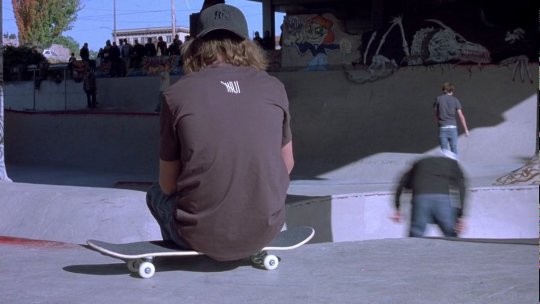
10. Paranoid Park (2007) While many movies centered around skateboarding spend their time and design budget trying to make the outsider nature of the practice look “cool”, Paranoid Park spends its time making sure that the isolation, deep focus and rebellious attitude that come with skateboarding were more authentic than they were appealing. High school is already a very taxing and polarizing section of juvenile development, and based on your perception at the time, the weight that the world unloads on you can feel wholly unbearable. Perhaps this is what makes Paranoid Park such a tense film… that natural teenage angst is already imprinted into the film (and amplified due to the casting of relative unknowns), but Gus Van Sant’s signature use of alternative film stocks, obscure soundtrack and expressive, layered sound design but you square in Alex’s head from the opening moments. As the narrative unfolds, we realize that Alex is not only dealing with standard-issue teen stress, but has unwillingly found himself involved in the type of events that change an individual’s world. This film plays well as the first film post-Death Trilogy, as it deals with the gravity of mortality head-on much like the aforementioned three films, but does so from an adaptive stance rather than one based on true events. If you’re a fan of skater flicks, movies with strong teen acting, or little-known Gus Van Sant gems, then Paranoid Park is a gem waiting for discovery.

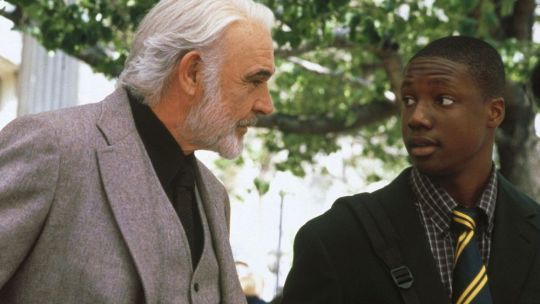
9. Finding Forrester (2000) Gus Van Sant has always had a way with stories that dive below the surface of the human experience and condition, so it makes sense that his attempt at a New York-based movie about people living in “the hood” would cover an array of topics with masterful subtlety, specifically the topics of race relations, generational gaps and the blurry line between education and exploitation. The casting on this film is extremely strong… then newcomer Rob Brown gives a riveting and dynamic lead performance, it’d be harder to cast a more perfect curmudgeon than Sean Connery, and appearances by F. Murray Abraham, Anna Paquin, Busta Rhymes and a Matt Damon cameo all stand out. Speaking of Damon, Finding Forrester shares a similar energy to Good Will Hunting, but the proximity of release ultimately held Finding Forrester from finding its proper audience (no pun intended). I wish I had more to say about this film outside of my personal feelings and connections to the story (which I will save for a dedicated deep dive in the future), but Finding Forrester is one of those films that has no trouble speaking for itself.

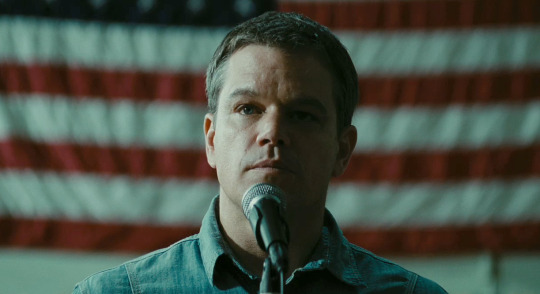
8. Promised Land (2012) As of the point that this blog post was created, this film stands as the last of the great Van Sant creations. There is something about the Gus Van Sant approach to filmmaking that works best with “salt of the Earth” types, and with Promised Land being centered around the practice of fracking, much of that down-home nature is immediately baked into the story. Speaking of the story, the film was co-written by the characters who ended up being the protagonist and antagonist of the picture, respectfully, which created an electric main dynamic that served as the spine for many other strong dynamics present in the film. In terms of the cinematography, much of Van Sant’s bold approaches and stylistic shifts are absent, save for a few beautiful bird’s eye view perspective shots that give you a real idea of what rural America looks like. Van Sant is no stranger to stacked casts, but he gets some truly top notch names to take part in this affair, and true to the clout behind these names, the performances are as stellar as they are believable and natural. The film also touched a nerve with the actual oil industry due to some of its comments on fracking, despite it not having the reach or success of other Van Sant films. While possibly an indicator that Van Sant would be making a stylistic shift, Promised Land still manages to capture what makes Van Sant his best self in terms of not only presenting real people, but topical and important situations.

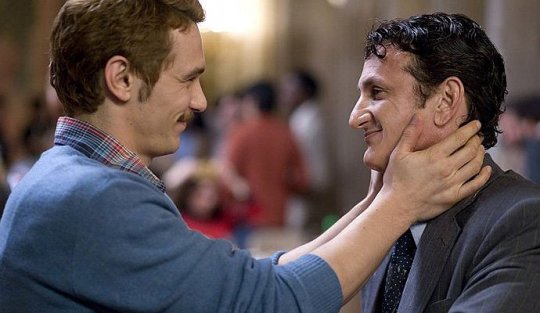
7. Milk (2008) Gus Van Sant is clearly no stranger to having representation for the gay community in his films, so it makes sense that one of the hallmark films in his canon would center around gay rights activist and politician Harvey Milk. Much like JFK crystalized Oliver Stone, or Spike Lee was raised to another echelon by Malcolm X, Van Sant found a second round of Academy Award-level validation via this biopic while solidifying himself as a creative who could go back and forth effortlessly between big budget studio films and independent projects. With Sean Penn giving one of his signature chameleon-like performances and leading the pack, this Van Sant production is filled with tons of burgeoning talent who have since gone on to make names for themselves in the industry, including the likes of Emile Hirsch, Diego Luna, James Franco, Alison Pill and others, plus a standout performance from Josh Brolin (who also depicted George W. Bush in the same year for the aforementioned Stone). While it may not be the most technically marveling film of Van Sant’s career, it is clearly one of his most important, and the way that it handles the messages it intends to share is as confident as it is even-keeled, which is important for a film that could have easily become a soapbox for espousing personal beliefs and political agendas.

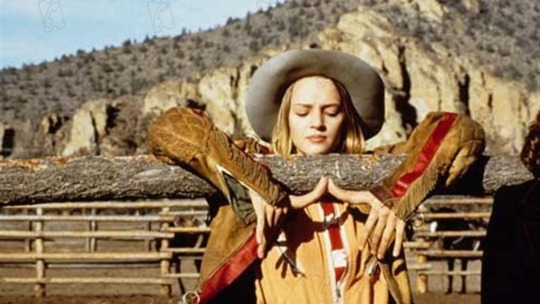
6. Even Cowgirls Get the Blues (1993) This Gus Van Sant adaptation of the famed author Tom Robbins novel shares the same creative energy of films like Fear and Loathing in Las Vegas, Natural Born Killers, Harold and Maude and so on in the sense that it is a very expressive film with a very specific idea it is looking to present. Where the aforementioned films explored ideas of free love taken to the extreme, the toxicity of media, love without judgement and so on (respectively), Even Cowgirls Get the Blues puts femininity and identity outside of the male gaze squarely in its crosshairs. Uma Thurman takes on the role of Sissy with wide-eyed zeal, floating through a series of hitchhiker-based adventures until her reluctant visit to the Rubber Road Ranch helps her find the missing piece of her puzzle. Seeing a bizarre, star-studded tale of a woman finding her agency sounds like it would work on the surface, but from what I could find, the film failed to make a connection with audiences and is considered a commercial and critical failure (which is probably why it was the toughest film to track down on this list). That being said, I’m a sucker for films that catch a bad rap, especially when the combination of such a unique director and visionary author are the foundation of it, because it makes me curious about why I find connection where others did not… who knows, maybe it was those extremely distracting rubber thumbs (the only real knock I can make on the film), or maybe the Tom Robbins style is tough to transfer from page to screen, but for my money’s worth, I can see the vision.

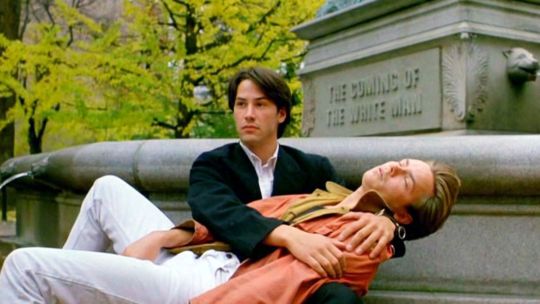
5. My Own Private Idaho (1991) Somewhere within the intersection of films like Midnight Cowboy and Fight Club lies My Own Private Idaho, an extremely personal and nuanced film that covers many topics with depth and an ease that comes with wisdom and experience. For example, when it comes to views on identity, we get two rich narratives that could easily both be their own film : Mike (portrayed by River Phoenix) is going through a crisis of identity based on a sordid history with his mother and absentee father that makes his search for love transform into a life of hustling as a way to find momentary intimacy; meanwhile, Keanu Reeves (who plays Scott) is an entitled young man awaiting an inheritance that decides to spend the time until it happens “slumming” with those many would consider the outcasts of society, much like the “tourists” spoken of by Edward Norton’s narrator in Fight Club. The struggle with masculinity in the face of homosexuality is all over this film, from its multiple male on male connections to the very toxic manner that the core group interacts with one another, when they are not grieving or putting their livelihood in danger via petty crimes. In terms of Van Sant style, the film is one of his most innovative (outside of the film holding the top spot) in terms of looks, with its unique range of colorful title cards, the pinhole vision that Mike uses on his road, or even the standout magazine rack sequence. The film is also a perfect follow-up to Drugstore Cowboy, and could easily double feature with it to this day. As someone not wholly familiar with Shakespeare’s Henry plays, I did not catch that My Own Private Idaho was an adaptation, so I will not only have to revisit it with that familiarity in tow, but I will have to take a look into James Franco’s re-cut, My Own Private River, as well.

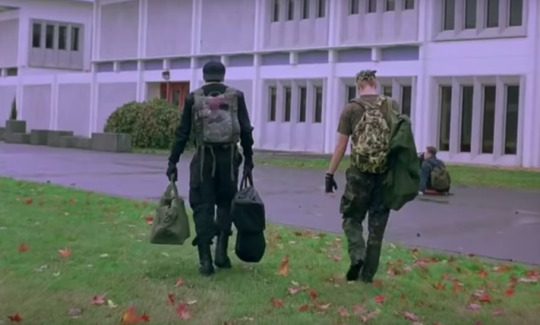
4. Elephant (2003) Based solely on the nature and definition of a trilogy, a second film can make or break things. Gerry and Last Days share similarities in how quiet and isolated they are, so it makes sense that Elephant, part two of Van Sant’s Death Trilogy, would in many ways be the meat of the trilogy sandwich in terms of style and thematic substance. Elephant operates on several distinct levels based on Van Sant’s observations of the world going into the new millennium, as the film allowed him a foundation for both experimentation and examination by proxy. While the long takes and vast amount of distance traveled during said takes was present in all three films of the trilogy, Van Sant made a concentrated effort to make the shots look and feel similar to that of video games like the later Grand Theft Auto entries, hence a number of the shots being positionally locked during travel (often times a few feet behind the character at the center of that moment’s focus). There are ramp-downs of the frame rate to punctuate certain moments, and quite often the camera is thrown on a tripod and allowed to take in the array of high schoolers living their standard life. It is this mundane world-building aspect that not only gives the viewer a rapid but deep look into a handful of character’s lives, but it gives you a sense of the school’s social hierarchy while forcing you to reflect on where you once stood within it. Per the film’s clever title, the elephant in the room eventually appears in the form of Eric and Alex, the pair of school shooters meant to reflect the Columbine Massacre perpetrators. While school shootings weren’t an unknown phenomenon going into the 2000’s, Elephant became prophetic in its vision by releasing right before the numbers started rising at an alarming rate on these incidents. In that sense, Elephant holds the dual distinction of not only being one of Van Sant’s best films, but one of his most important. I will soon be looking into the 1989 Elephant film as well.

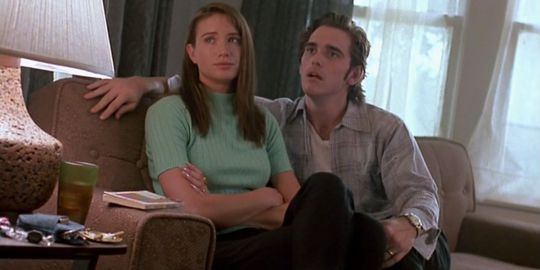
3. Drugstore Cowboy (1989) The power of Drugstore Cowboy as a modern-day narrative tragedy about the epidemic of prescription drugs, the dark allure of crime and the oddball way that broken people find solace in one another is immediately evident to anyone who has had the pleasure to see Gus Van Sant’s studio directorial debut. Where the film really stands out however, in my opinion, is the way that Van Sant is able to achieve his major studio look while deeply applying a very artistic and personal aesthetic to the cinematography and editing. The traditional looks are interspersed with the use of different film stocks, subtle blends of animation and flashes of stylistic edits that were almost certainly an inspiration for Darren Aronofsky’s “hip-hop editing” style. Add to this an incredibly intuitive and expressive core cast driven by the chemistry between Matt Dillon and Kelly Lynch (and a very early Heather Graham supporting appearance), plus a strong appearance by the always memorable Max Perlich, a fiery James Remar performance and an iconic cameo from William S. Burroughs. The jazz-influenced score not only makes key scenes livelier, but it is a symbolic statement on the drug use depicted in the film, while simultaneously playing counter to the soundtrack choices. Period, point-blank, Drugstore Cowboy is the kind of film that surely put the world on notice, and was a clear signal of the magnificent work that would follow.

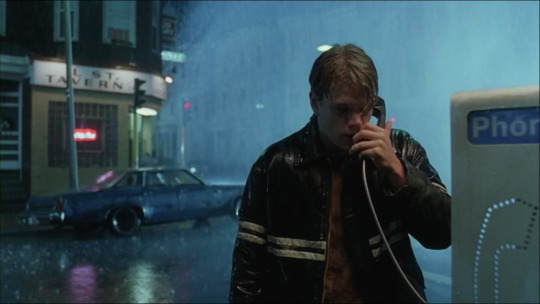
2. Good Will Hunting (1997) If held up to the standards of what people consider to be good (or even classic) film, Good Will Hunting more than holds up to scrutiny. Visually there are a small handful of flourishes, and having Elliot Smith’s music accompany Will’s painful but enlightening journey has only become more of a bittersweet sting as the years go by. In terms of performances, everyone brought their A+ game to the table, be it the leading performances of Matt Damon, Robin Williams or Stellan Skarsgård, the supporting performances of Ben Affleck or Minnie Driver, or even the engaging nature of Cole Hauser and repeat scene stealer Casey Affleck. After a flurry of dedicated fandom viewings in the years following this film’s release, a very long period away from the film where I had leagues of personal growth, and a revisitation for this set of rankings, what I have discovered is that Good Will Hunting presents a wish fulfillment fantasy that was nearly incapable of being a reality in the pre-internet age for anyone other than a character like Will : an undiscovered genius with a degree from the school of hard knocks. In a world where people often wish they had the correct answer to every question, the looks and personality to be a social magnet, and the ability to back up any tough talk with stone hands, Will Hunting stood as an idealized example you wished you could peel off the screen and have some beers with. As the internet has invaded our lives, however, most everyone has turned into a keyboard version of Will Hunting, looking for fights online when not having briefly intimate Google sessions to flex our supposed knowledge. Much like Will, many people find that the knowledge minus the wisdom of worldly experience and vulnerability leaves you a shell of a person filled to the eyeballs with regret, and perhaps that is why this film only gets better as the years go by, and remains among the best of the Van Sant creations.


1. To Die For (1995) For the longest time, I avoided To Die For simply because I was not a fan of Nicole Kidman… the vast majority of her roles held no interest to me prior to To Die For (it took Eyes Wide Shut for me to really start paying attention to her), and because she was so key to the film, there was never a sense of urgency about seeing it. As time went by, however, I started to hear rumblings that To Die For may have been a bit ahead of its time, to the point that technology and social practices have caught up to some of the ideas presented in the film. I finally watched it for this ranking set, and man, I really missed the boat on this one. Plain and simple, this film is pure genius on every level. The presentation starts off documentary-esque, which not only allows for expedited distribution of backstory information, but immediately gives you an idea for the personalities of our key characters. Kidman’s portrayal of Suzanne stood as the textbook example for what has become commonly known as sociopathy, with her blind desire for fame and respect leading to a wake of human destruction. In terms of narrative pacing, the film proceeds like a match dropped at the endpoint of a long gasoline trail, slowly drifting towards the eventually point that everything blows up and damage must be assessed while blame and accountability must be handled, resulting in a truly powerful ending more than deserving of the heavy lifting that precedes it. The 24-hour news cycle was on the horizon in 1995, daytime talk shows and MTv’s The Real World had not shifted into the reality TV landscape that we know today, and while a few high profile cases such as the Menendez Brothers and Pamela Smart trial (the loose inspiration for this film) had happened, the bombshell and watershed trail that was the O.J. Simpson murder case was hot on the heels of To Die For’s release (the same month, actually). Stylistically, the film also bears striking resemblance to an updated version of Sunset Boulevard, be it knowingly or not. Long story short, the best films not only comment on the times in which they are created, but gain relevance as time passes, and To Die For handled both of these things phenomenally.
#ChiefDoomsday#DOOMonFILM#GusVanSant#MalaNoche#DrugstoreCowboy#MyOwnPrivateIdaho#EvenCowgirlsGetTheBlues#ToDieFor#GoodWillHunting#Psycho#FindingForrester#Gerry#Elephant#LastDays#ParanoidPark#Milk#Restless#PromisedLand#TheSeaOfTrees#DontWorryHeWontGetFarOnFoot
22 notes
·
View notes
Photo

🌲 oh yeah we’re talking Last Days (2005) by Gus Van Sant this month for ‘Forward Flash’ on the podcast • out in a few weeks #lastdays #michaelpitt #gusvansant https://www.instagram.com/p/Ca--QByO0C5/?utm_medium=tumblr
2 notes
·
View notes
Photo




My Own Private Idaho (1991)
4 notes
·
View notes
Photo

Photo books, 9, Larry Clark and Gus van Sant.
"Larry Clark. Fotografier"(1986). "Partial to home. Photographs by Birney Imes" (1994). "Tulsa" (2000) mint condition/unwrapped. "The perfect childhood" (1995). "Kids" (1995). "Teenage Lust" (1981). "Journal of Contemporary Art" (1992). "Gus Van Sant. 108 Portraits" (1992). "Larry Clark. Groeninger Museum" (1999)
3 notes
·
View notes
Text
MY TOP 5 FAVOURITE MOVIES:

1. La La Land (2016)
dir. Damien Chazelle

2. Good Will Hunting (1997)
dir. Gus Van Sant

3. Les Miserables (2012)
dir. Tom Hooper

4. Closer (2004)
dir. Mike Nichols

5. Pulp Fiction (1994)
dir. Quentin Tarantino
#pulpfiction#quentintarantino#lalaland#damienchazelle#tomhooper#lesmiserables#closer#goodwillhunting#mikenichols#gusvansant#movies#films#cinematography#cinema#hughjackman#emmastone#ryangosling#natalieportman#juliaroberts#mattdamon#robinwilliams#benaffleck#umathurman#samuelljackson#johntravolta#judelaw#annehathaway
34 notes
·
View notes
Photo

Gerry ⭐️👬. #gusvansant #movie #illustration #ohyeah https://www.instagram.com/p/B_LCD8NqKKp/?igshid=12kwkuq0h8e4e
2 notes
·
View notes
Photo

Recent Paintings, Hollywood Boulevard by Gus Van Sant https://thisispaper.com/Recent-Paintings-Hollywood-Boulevard-by-Gus-Van-Sant
14 notes
·
View notes
Photo

Gus Van Sant, New York City, fall 1996 in the loft Allen’d recently bought from painter Larry Rivers in the East Village. Van Sant had been shooting Allen’s “Ballad of the Skeletons” video which ran on MTV buzz chart the next month leading up to the 96 election. (photo: Allen Ginsberg, courtesy Stanford University Libraries / Allen Ginsberg Estate) #gusvansant #myownprivateidaho #drugstorecowboy #balladoftheskeletons #allenginsberg #mtv #poetrycommunity #queer #beatgeneration #gus_van_sant @gus_van_sant #cinema #poetry #poets (at East Village, Manhattan) https://www.instagram.com/p/B5oDAJIhyzk/?igshid=tkk9mg5rypl
#gusvansant#myownprivateidaho#drugstorecowboy#balladoftheskeletons#allenginsberg#mtv#poetrycommunity#queer#beatgeneration#gus_van_sant#cinema#poetry#poets
6 notes
·
View notes


